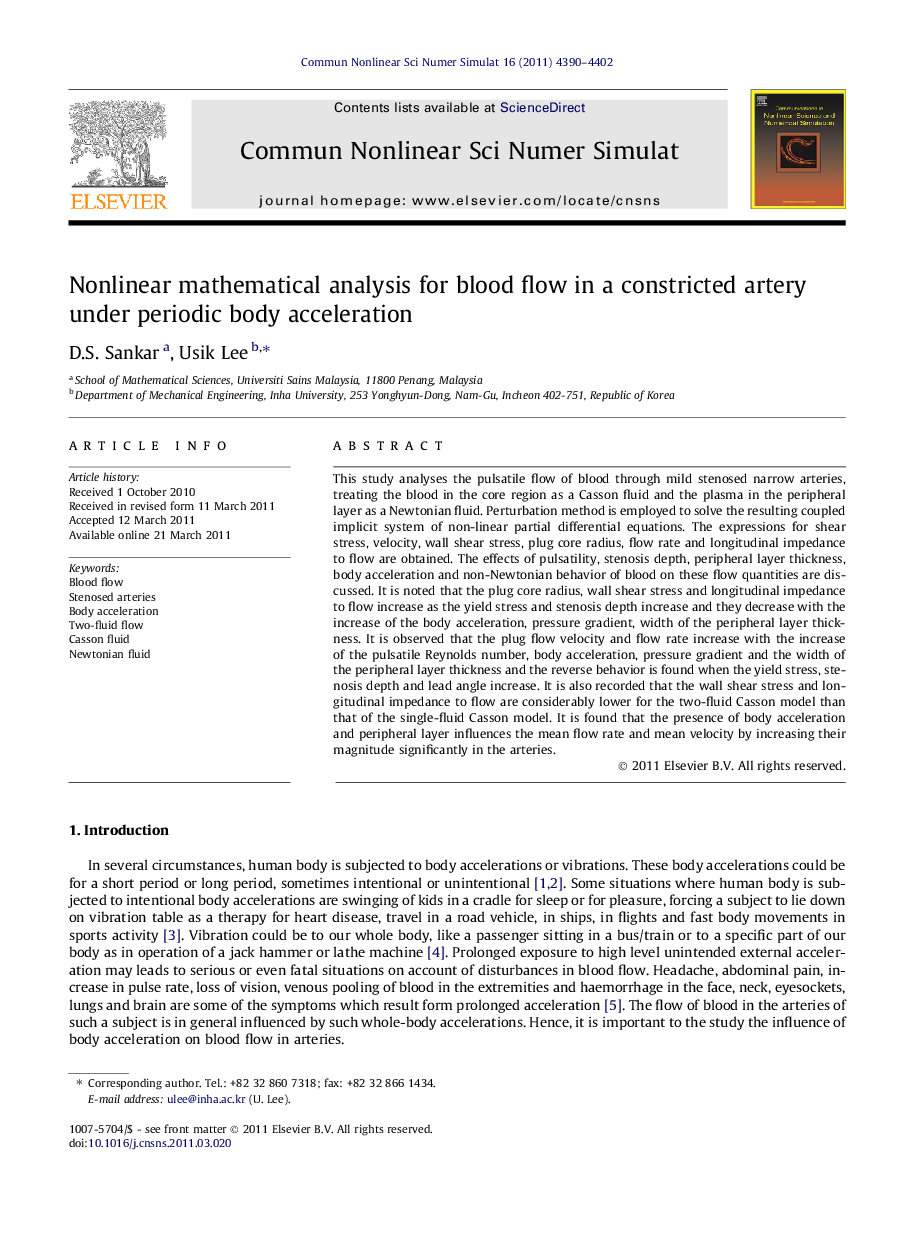| Article ID | Journal | Published Year | Pages | File Type |
|---|---|---|---|---|
| 755959 | Communications in Nonlinear Science and Numerical Simulation | 2011 | 13 Pages |
This study analyses the pulsatile flow of blood through mild stenosed narrow arteries, treating the blood in the core region as a Casson fluid and the plasma in the peripheral layer as a Newtonian fluid. Perturbation method is employed to solve the resulting coupled implicit system of non-linear partial differential equations. The expressions for shear stress, velocity, wall shear stress, plug core radius, flow rate and longitudinal impedance to flow are obtained. The effects of pulsatility, stenosis depth, peripheral layer thickness, body acceleration and non-Newtonian behavior of blood on these flow quantities are discussed. It is noted that the plug core radius, wall shear stress and longitudinal impedance to flow increase as the yield stress and stenosis depth increase and they decrease with the increase of the body acceleration, pressure gradient, width of the peripheral layer thickness. It is observed that the plug flow velocity and flow rate increase with the increase of the pulsatile Reynolds number, body acceleration, pressure gradient and the width of the peripheral layer thickness and the reverse behavior is found when the yield stress, stenosis depth and lead angle increase. It is also recorded that the wall shear stress and longitudinal impedance to flow are considerably lower for the two-fluid Casson model than that of the single-fluid Casson model. It is found that the presence of body acceleration and peripheral layer influences the mean flow rate and mean velocity by increasing their magnitude significantly in the arteries.
► A two-fluid model for blood flow in stenosed narrow arteries under body acceleration is studied. ► The fluid in the core and peripheral regions are assumed as Casson fluid and Newtonian fluid respectively. ► Perturbation method is used to solve the system of nonlinear partial differential equations. ► The impedance to flow is lower for the two-fluid model than for the single-fluid model. ► The effect of body acceleration is to increase the mean velocity and mean flow rate.
